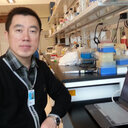Proteome-Level Analysis of Metabolism- and Stress-Related Proteins during Seed Dormancy and Germination in Gnetum parvifolium.
Ключевые слова
абстрактный
Gnetum parvifolium is a rich source of materials for traditional medicines, food, and oil, but little is known about the mechanism underlying its seed dormancy and germination. In this study, we analyzed the proteome-level changes in its seeds during germination using isobaric tags for relative and absolute quantitation. In total, 1,040 differentially expressed proteins were identified, and cluster analysis revealed the distinct time points during which signal transduction and oxidation-reduction activity changed. Gene Ontology analysis showed that "carbohydrate metabolic process" and "response to oxidative stress" were the main enriched terms. Proteins associated with starch degradation and antioxidant enzymes were important for dormancy-release, while proteins associated with energy metabolism and protein synthesis were up-regulated during germination. Moreover, protein-interaction networks were mainly associated with heat-shock proteins. Furthermore, in accord with changes in the energy metabolism- and antioxidant-related proteins, indole-3-acetic acid, Peroxidase, and soluble sugar content increased, and the starch content decreased in almost all six stages of dormancy and germination analyzed (S1-S6). The activity of superoxide dismutase, abscisic acid, and malondialdehyde content increased in the dormancy stages (S1-S3) and then decreased in the germination stages (S4-S6). Our results provide new insights into G. parvifolium seed dormancy and germination at the proteome and physiological levels, with implications for improving seed propagation.



